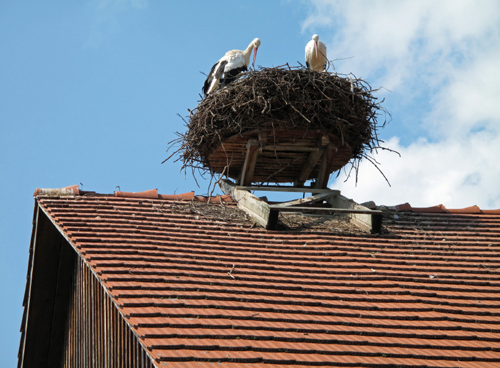
by Alex A. Kecskes
The most common pest species are European starlings, pigeons (sometimes called rock doves), and the female and male house sparrows. The male bird usually establishes and defends the nest. After the pair builds a nest, the male continues to defend the territory while the female hatches eggs. To keep common pest birds from nesting on your property, start by removing any sources of food, water and shelter.
Before they begin nesting, pest birds will look for food sources to sustain themselves and feed their young. Natural food sources include seeds, fruits, berries and insects. Trim back or remove plants that produce edible nuts, fruits and berries. Also be wary of any food scraps spilling out of trashcans on your property. Keep lids tightly closed on cans and make sure the surrounding areas have no food scraps on the ground to entice birds.
Insect larvae living in the cracks and grooves of house siding will attract woodpeckers, and you know how much damage they can do to your property. Caulk the edges of the grooves to fill any open tunnels. Also keep in mind that a source of water is essential for birds year round. Starlings are especially attracted to water. So cover up or drain any areas of water near your property.
All birds need shelter for nesting, which varies with the season and the species of bird. Remove or block access to any alcoves, nooks or crannies that birds can use to build a nest. Trim back and thin out any trees where birds may want to build a nest.
Unfortunately, not all bird problems can be eliminated by removing the incentives of food, water and shelter. Sometimes repellants and deterrents must be used to dissuade birds from nesting. The best of these are humane and can be highly effective, especially when used in tandem.
To discourage birds from nesting on ledges and rafters, make them inaccessible by installing bird netting on the underside of the rafters. No Knot Bird Netting is ideal for most exclusion applications because it’s fabricated of flame resistant polypropylene, chemically inert, and highly resistant to many chemicals and temperature extremes. In general, good bird netting won’t rot, absorb water, or mildew. The best bird netting is ISO 1806 Protocol Mesh Tested and U.V. stabilized.
Bird netting is effective for use against pigeons, sparrows, starlings, crows and gulls. It comes in several stock sizes and custom cuts--including 2- and 3/4-inch mesh. Unlike many netting products, No Knot netting is light and easy to handle and install. It also comes in different colors--including white, stone and black to blend in with your property.
Another exclusionary method for preventing birds from nesting on ledges and rafters involves the installation of Bird Slope. Birds very quickly get the message that the super slippery angled PVC panels are too slippery to even land on, much less build a nest on. After a few tries, they simply move on to better nesting sites.
Many architects prefer bird slope panels because they can integrate them into the design of the building or structure, making them “invisible.” The panels even come in a variety of different colors to blend in with a building's color scheme. They’re easily installed on most any surface using nails, screws or glue.
To discourage pest birds from large areas, try Bird Sonics. These bird proofing devices keep birds from nesting by emitting predator and distress sounds that birds instinctively seek to avoid. Sonic bird deterrents are ideal for use against crows, starlings, swallows, gulls, woodpeckers, sparrows, grackles, cormorants and many others. One sonic system on the market blasts the sound of Peregrine falcons (a pigeon's dreaded enemy) defending their territory. Another system targets starlings and seagulls, emitting the sounds of predator hawks screeching and gulls under attack. There’s even a system that emits distress and predator calls for up to 22 types of birds. The sounds emitted by the best sonic systems sound like normal bird sounds to the human ear.
 by Fran Prisco When pest birds are occupying your building, how do you keep them away? Installing humane bird guards is the answer. Birds like sparrows, starlings and pigeons are often found landing, roosting and nesting on or near office buildings in any large city. These birds are known as pest birds because of the damage and health risks they impose. Not only do their nesting activities cause damage to buildings, so do their droppings. Bird droppings are acidic and can quickly erode building materials costing building owners thousands to repair. The droppings left behind by birds can also be a health hazard; carrying any of 60 plus communicable diseases. Bird roosts can also harbor parasites and flees that can easily invade buildings. Cleaning Up Bird DroppingsIt is important that safety precautions are taken when cleaning up bird droppings and debris. - During the cleanup, seal heating and cooling air ducts or shut the system down. Only authorized cleanup personnel should be present.
- Healthy individuals should do the cleanup.
- Wear a respirator that can filter particles as small as 0.3 microns.
- Wear disposable protective gloves, hat, coveralls and shoe coverings.
- Moisten the droppings with a light mist of water to keep spores from becoming airborne and keep them wet.
- Put droppings into sealed plastic garbage bags.
- When finished and while still wearing the respirator, remove protective clothing and place it in a plastic bag.
- Wash or shower.
- Check with local government agencies to verify that disposal of the waste is permissible through standard trash pickup.
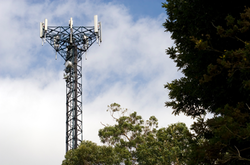 Cell-phone towers are becoming as ubiquitous as trees. Over 100,000 towers are listed in a federal database, with some 22,000 new towers having been erected in just the past five years. Without proper bird deterrents, the towers can be dangerous to birds. According to the U.S. Fish and Wildlife Service, between 5 million and 50 million birds die each year when they slam into towers that are used to power cellular telephones, pagers, televisions and radios, Migrating birds crash into these towers because they are lighted at nigh and attract birds. Bird deterrents can prevent these mishaps. According to environmentalists, birds killed or injured include such endangered migratory songbirds as the black rail, Bell's vireo, the golden-winged warbler and Henslow's sparrow. Most songbirds fly at night and orient themselves via starlight. In bad weather, birds often mistake tower lights for stars. The birds keep circling until they collide with the tower, support wires, or each other. The problem is that birds are sensitive to magnetic radiation to the point where microwaves interfere with their sensors and misguide them while navigating. Environmentalists have urged cell phone companies to install bird deterrents to save the birds.
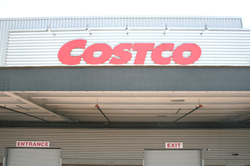 If you run a grocery store, you know about health inspectors and health codes. You also know that the last thing you need in this fragile economy is a health code violation. Most cities in the U.S. have two types of violations: critical and non-critical. Pest birds can cause a critical violation. If you want to continue to do business, you must find a way to get rid of birds that may be loitering around your store. According to the U.S. Department of Agriculture, critical violations could cause a food-borne illness to infect a person. Most government inspection programs are based primarily on food safety, instead of food quality. Stores are categorized based on the food safety risk posed by any activity conducted in the store. If a store is handling easily spoiled or food subject to infection, such as raw meat or deli service, it is considered a high-risk store and inspections are conducted more frequently. Moderate risk stores include convenience stores that heat cooked foods like hot dogs or pizza. Low risk stores usually carry only pre-packaged, non-potentially hazardous foods. There are many ways to get rid of birds, which when spotted by health inspectors, may cause you to incur a health code violation.
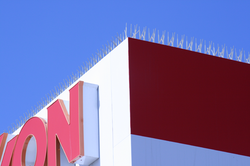 Pest birds pose all kinds of problems for commercial property owners. They create a distraction for employees. They make noise that can turn off customers and annoy workers. And they can contaminate your property with disease-carrying droppings. The bird invasion begins innocuously enough. One bird will act as a scout and check out the area for predators and other dangers, another may be in charge of finding food, and perhaps a third will evaluate the area for nesting possibilities. These early scouts often relay the good news to their flock, and pretty soon you've got a small-scale invasion of flying pests. To get rid of birds, you've got to swing into action early with effective bird control measures. As a commercial property owner, you have to be pro-active in your mission to get rid of birds. If your establishment has anything to do with food processing or packaging, you can't bury your head in the sand and pretend the birds don't exist. Ignore them and you'll have to deal with health inspectors. Let birds go unchallenged and they will damage your sliding windows and doors, seize up skylights and turbine roof vents, and damage those expensive AC units you paid so dearly for. Bird nests can also create a fire hazard as most of them are built from excellent dry fire kindling.
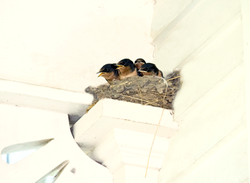 Spring is just around the corner and so is the arrival of Swallows. They'll be looking your home over for nesting and roosting spots. Yes, they're beautiful birds, but what they can do to your home and yard is not so pretty. They'll be building their mud nests on your garage, gazebo, patio and home. In fact, the eave of your home offers the perfect nest-building spot for swallows. It protects them from predators and it offers shelter from the elements. So unless you've prepared your property properly with the right bird deterrents, you'll be plagued with swallow nests, the mess and debris. Swallows prefer to nest in colonies, causing major headaches and thousands of dollars in damage for homeowners. And it's not just the nests; swallow droppings are unsightly and hazardous, carrying diseases that can be transmitted to humans. When swallow nests eventually fall to the ground, the bugs, fleas, ticks and mites harboring inside can spread to dogs, cats and children who may pick them up.
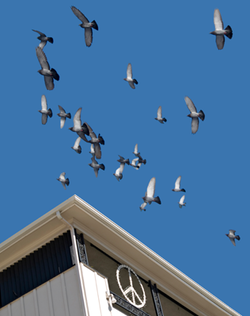 by Alex A. Kecskes Not long ago, feeding pigeons in Trafalgar Square became an offense with violators being fined. In one city, pest birds had learned to associate a school's lunch bell with feeding time and would aggressively pester children for food. The fact is, " get rid of pigeons" has become the battle cry in many cities, towns and parks throughout the world. Especially as city health officials become increasingly aware of the many diseases carried by pigeon droppings. The truth is, pigeons can create a number of serious problems. Gathering in flocks on buildings, pigeons can constitute a threat to human health and safety. The mess and droppings left by pigeons can negatively impact the appearance of a business. Often, the sheer weight of bird droppings can lead to structural collapse, particularly ceilings. It can also have a negative impact on a business's workforce. This includes the slip-and-trip hazards bird droppings leave on walkways, steps and entrances. It's no wonder more property owners seek ways to get rid of pigeons. Clean-up costs can be prohibitively expensive. Removing nesting materials and accumulated droppings can be difficult, sometimes requiring specialists in "moon suits" to protect them from disease-carrying droppings that are aerated during removal by sand blasters. Through bird egg removal, birth-control pills and food deprivation, problem pigeons can be driven out of most areas in three to five years. While these methods may be humane, they are too time-consuming to appeal to most property owners and municipalities. Fortunately, there are far more efficient and expedient ways to get rid of pigeons.
|







 RSS Feed
RSS Feed